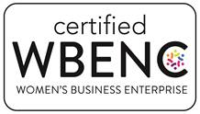As an organization we recently decided to start offering a new skillset to our clients: internal videography. Why would a learning and development organization decide to start offering videography? I’m sure you didn’t need to ask. One of the ways people learn is through watching videos. YouTube is the 2nd most visited site in the world. It’s said that “how-to” videos were increasing by 70% year over year and that was back in 2015. People, on average, spend 18 minutes a day watching YouTube videos.
People learn in all different ways. Some learn better through visual opportunities, others auditorily and still others kinesthetically and/or tactically. How-To videos provide all of these options at once as long as you have the tools in front of you to truly test out the learning in real time.
So why should you care?
As we’ve come to know, there is so much information available on the internet. Some of that information is real while other information is false. Many of the videos out there provide experts speaking on a subject while still others provide amateurs. Would you rather your people be looking to external resources (such as YouTube) to find the information or would you rather your internal subject matter experts create videos to allow your employees the opportunity to learn from a source they can trust and follow-up with? I’ll let you answer that question but I think we both know the answer.
Alright, I’m convinced. Now what?
How to Implement Video Training at Your Organization
Here are a few tips we recommend when rolling out video to provide the best opportunity at engagement:
- Keep it short and sweet
Videos ideally should be no longer than 10 minutes. Any longer and they should be broken up into smaller segments
- Draft out the timeline of your video in advance.
Organize it in a way that’s meaningful. Jumping around will confuse the learner. Ensure you are creating a story that helps your employees understand the steps they would take (or that they should look out for) in the order they would see them
- Share different voices and experiences
An interview style video can make the act of being videotaped much less uncomfortable. Create the video as if two people were talking and there just happened to be a video camera setup on the side. This way you don’t have to look into the camera and the content can seem more like a conversation and less like a cheesy training video
While video isn’t the answer to all of our solutions, there is a lot of value there and we want to ensure we’re able to help our clients capture that value. Are we going to push these videos out externally? More than likely not. We’re doing our best to create a nice video for our clients and their employees but we are definitely not commercial ready. If you want commercial ready, that’s where Focus Forward Media comes in!









